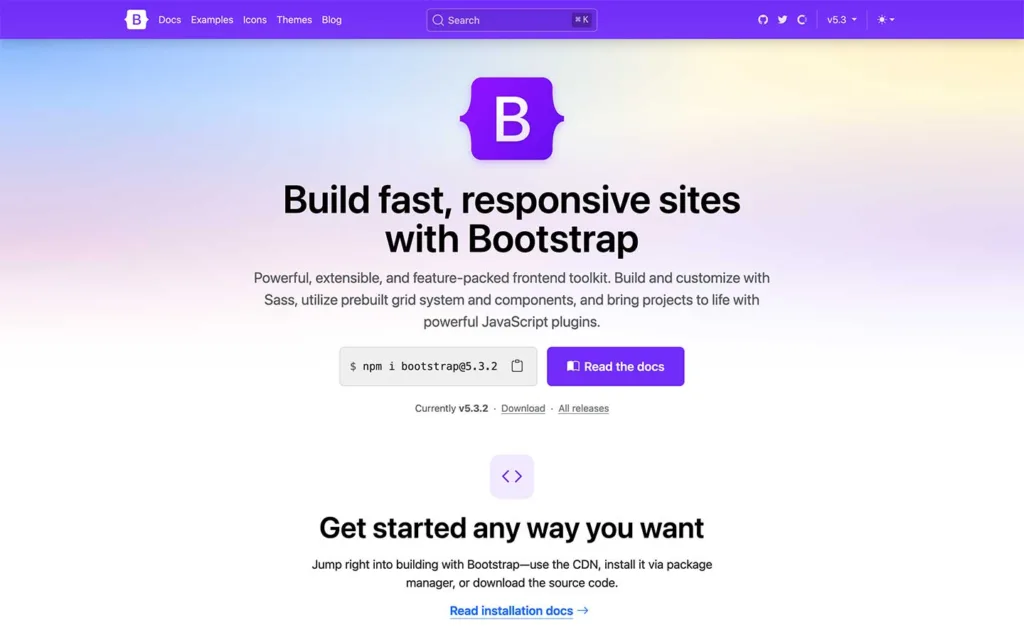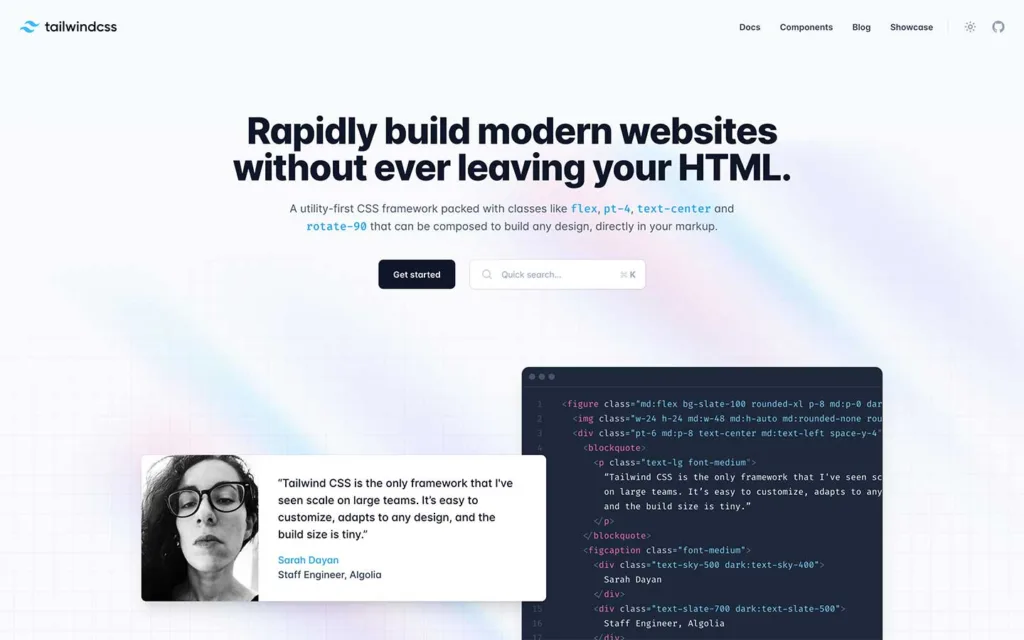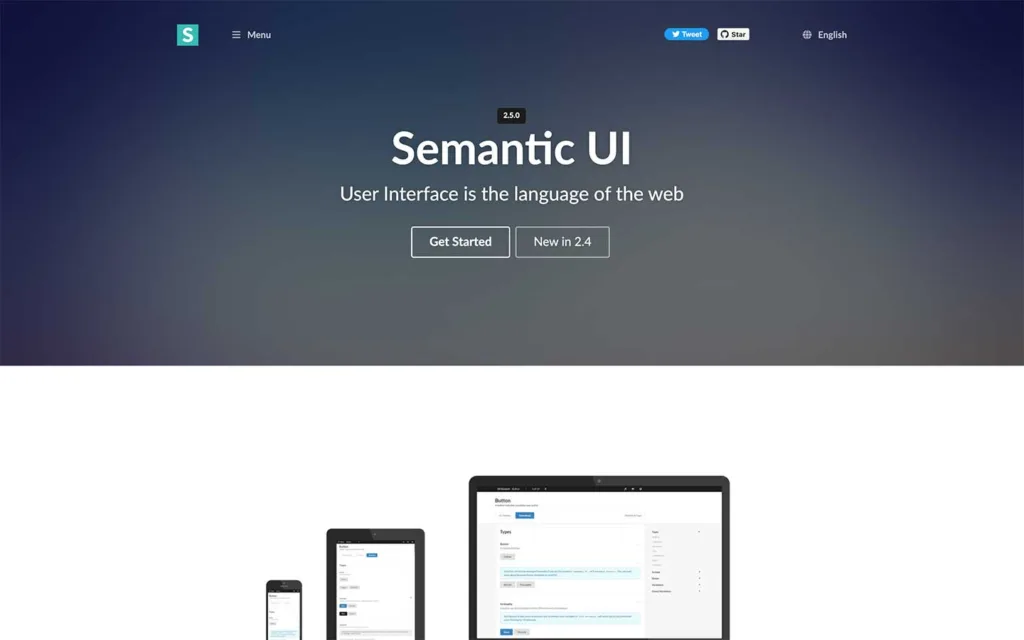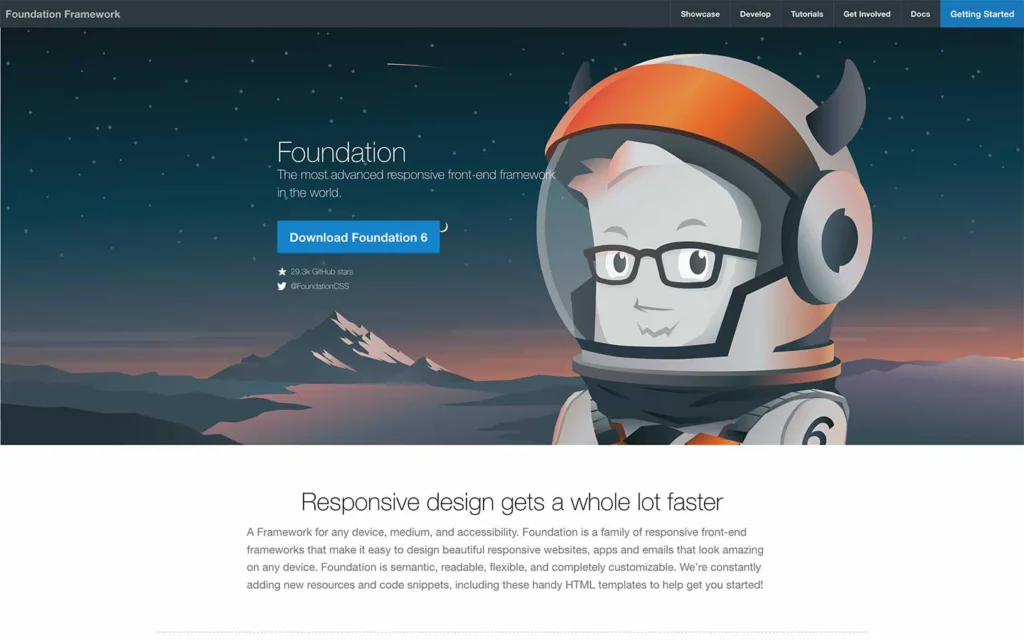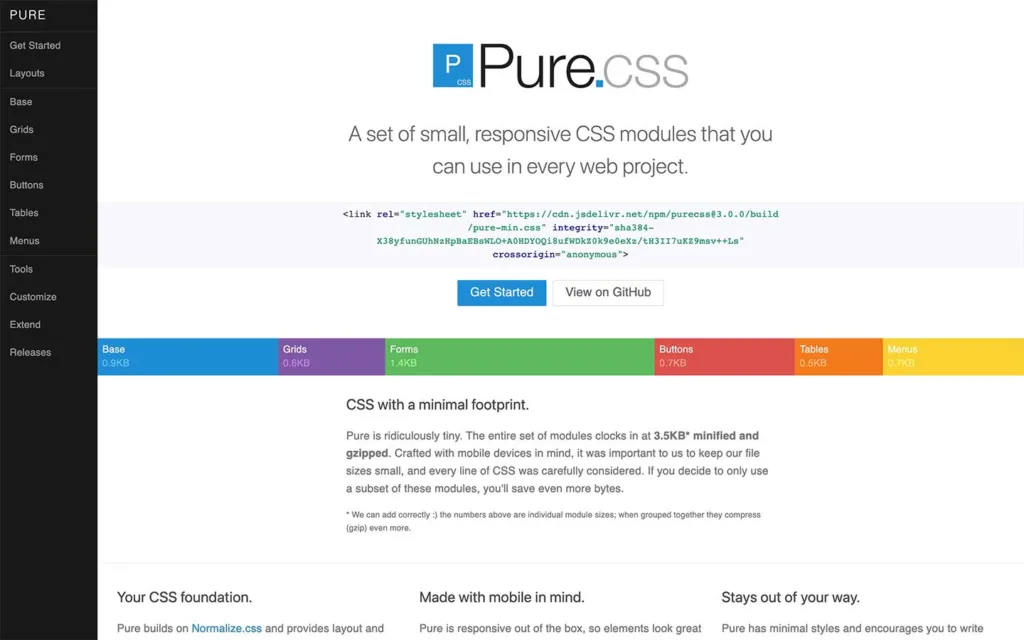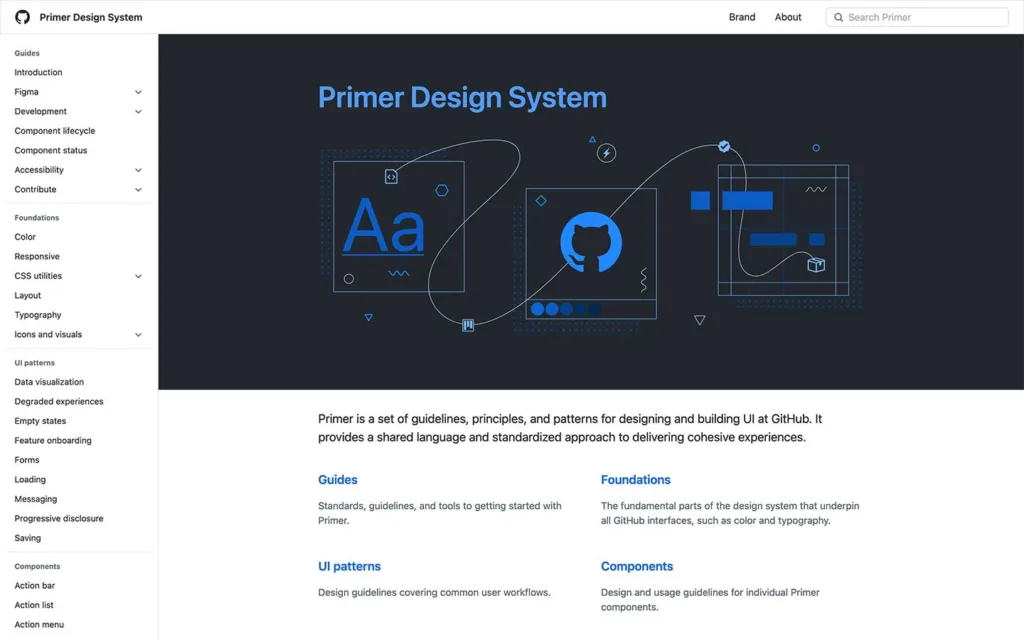10 Best CSS Frameworks
CSS frameworks are pre-written sets of CSS code and styles that provide a foundation for building web applications and websites. CSS frameworks often include a collection of pre-defined classes, styles, and components that you can use, allowing you to avoid writing CSS code from scratch.
Best Ready to Use Web Themes & Templates
Bootstrap 5 Templates
Bootstrap One Page Templates, Bootstrap 5 Templates, Free Bootstrap Templates
Why Should I Use a CSS Framework?
Using CSS frameworks in web development offers several advantages:
- Consistency: CSS Frameworks help keep a consistent look and feel across your website or application. They establish standard design patterns, ensuring all elements have a cohesive appearance.
- Code Reusability: Once you’ve built a project with a CSS framework, you can reuse the same framework or components for future projects, saving time and effort.
- Accessibility: Some frameworks prioritize accessibility, which is crucial for making your website or application usable by people with disabilities. This approach can save time in implementing accessibility features from scratch.
- Faster Development: CSS frameworks provide a set of pre-written styles, components, and layout systems, which can significantly speed up the development process. You don’t have to write as much CSS code from scratch.
- Reduced Learning Curve: For new or less experienced developers, CSS frameworks can provide a structured and organized way to work with CSS, reducing the learning curve.
- Responsive Design: Many CSS frameworks include responsive grid systems, making websites that work well on various screen sizes and devices more accessible.
- Customizability: While frameworks offer a default set of styles, they are usually highly customizable. You can modify and extend the styles to match your project’s unique needs.
- Best Practices: Many frameworks incorporate best practices in web design and development. They often follow modern design trends and use semantic HTML, which can lead to a better user experience and improved search engine optimization.
- Cross-Browser Compatibility: Frameworks are often thoroughly tested across different browsers, reducing the need for extensive browser-specific CSS rules and troubleshooting.
- Maintenance and Updates: A team of developers maintains CSS Frameworks, which means they receive regular updates and bug fixes. Regular maintenance of CSS Frameworks can keep your project updated with the latest web standards and security patches.
Bootstrap
Bootstrap is an open-source CSS framework developed by Twitter, and the Bootstrap community now maintains it. It provides pre-written HTML, CSS, and JavaScript components and styles.
Bootstrap’s primary goal is to simplify and expedite web development by offering a standardized and flexible set of tools for building user interfaces.
Bootstrap Pros
- Most Popular Frontend Framework
- Rapid Development
- LESS and SASS Support
- Responsive Design
- Cross-Browser Compatibility
- Consistency
- Customizability
- Large Ecosystem
- Documentation and Community
- Accessibility
- Active Development
- Backed by Twitter
Bootstrap Cons
- Large File Size
- Design Limitations
- Learning Curve
- Code Bloat
- Dependency on JavaScript
- Customization Complexity
- Additional Markup
Tailwind CSS
Tailwind CSS is a utility-first CSS framework that has gained popularity for its unique approach to web development. It provides highly customizable utility classes, rapidly allowing developers to build responsive and well-designed web interfaces.
Tailwind CSS takes a utility-first approach to styling. Instead of writing custom CSS classes for each element, you apply utility classes directly in your HTML markup to define the styles. For example, to set the text color to red, you would add the class text-red to an HTML element.
The approach of Tailwind CSS is to be modular and composable. You can combine utility classes to create complex styles without writing custom CSS. This approach makes it easier to maintain and update your styles.
Tailwind Pros
- Utility-First Approach
- Rapid Development
- Consistency
- Code Reuse
- Highly Customizable
- Responsive Design
- Reduced File Size
- Community and Documentation
Tailwind Cons
- Learning Curve
- Class Clutter
- Limited Customization
- Dependency on JavaScript
Semantic UI
Semantic UI is a CSS framework that provides a set of CSS and JavaScript components with a strong emphasis on semantic HTML and a clear, human-readable syntax. It aims to create web applications with intuitive and expressive designs while focusing on accessibility and ease of use.
The class names and code in Semantic UI are human-readable and self-explanatory, making it easier to understand and maintain your code. Semantic UI provides a variety of pre-designed and pre-styled components, such as buttons, forms, and menus.
Semantic UI Pros
- Semantic HTML
- Readable Syntax
- Pre-Designed Components
- Responsive by Default
- Accessibility
- Community and Documentation
Semantic UI Cons
- Customization Complexity
- Learning Curve
- File Size
- Design Constraints
Bulma
Bulma is a modern, open-source CSS framework designed to provide a straightforward and flexible way to create responsive web interfaces. It is known for its simplicity and ease of use, making it a popular choice for web developers.
Bulma relies on the CSS Flexbox layout model, making creating responsive grid systems and layouts easy. While Bulma is primarily a CSS framework, it also integrates well with Sass, a CSS preprocessor, allowing for greater customization flexibility.
Bulma is intentionally minimalistic, providing a set of core styling and layout components that developers can combine as needed for their projects. Bulma follows a mobile-first design approach, ensuring that websites built with the framework are mobile-friendly.
Bulma Pros
- Simplicity
- Flexbox Grid
- Modularity
- Developer Friendly
- Sass Integration
- Mobile-First
- No Javascript
- Flat Learning Curve
- Documentation
Bulma Cons
- Limited Pre-Designed UI Elements
- Customization Complexity
- Less Established Community
- Design Constraints
Materialize
Materialize is a popular CSS framework based on Google’s Material Design guidelines, emphasizing visual consistency, motion, and interaction. The approach of the Materialize CSS framework is to help developers create modern and visually appealing websites and web applications with a focus on responsive design and user experience.
The framework includes a responsive 12-column grid system that easily creates layouts that adapt to different screen sizes and devices. Materialize provides a wide range of pre-designed UI components, such as buttons, cards, navigation bars, and form elements, consistent with the Material Design aesthetic.
Materialize Pros
- Material Design Aesthetic
- Responsive Grid System
- Pre-Designed UI Components
- JavaScript Components
- Sass Integration
- Community and Documentation
Materialize Cons
- Design Constraints
- File Size
- Complex Customization
- Dependency on JavaScript
Foundation
Foundation is a responsive front-end CSS framework developed by ZURB. The Foundation is designed to help web developers and designers create responsive and attractive websites and web applications. The Foundation CSS framework is known for its flexibility, customization options, and emphasis on mobile-first design.
The Foundation CSS framework has a modular approach. It provides a range of pre-designed UI components like buttons, navigation bars, forms, and more, allowing developers to select and integrate the necessary components.
The Foundation is highly customizable. It offers Sass variables and mixins, allowing you to modify the framework’s styles and components to match your project’s design requirements.
Foundation Pros
- Responsive Grid System
- Modular Components
- Customization
- Email Design
- Mobile-First Design
- Animations
- Accessibility
- Community and Documentation
Foundation Cons
- Learning Curve
- Smaller Community
- Design Constraints
- File Size
- Complex Customization
Pure CSS
Pure is a minimalistic CSS framework developed by Yahoo. Yahoo has designed Pure to provide a lightweight, straightforward set of styles and layout components for web interface building. Pure CSS is known for its minimal design and ease of use.
Pure framework follows a modular approach, offering a collection of CSS modules for common web interface elements such as grids, forms, buttons, and tables.
Pure is a purely CSS framework and does not include JavaScript components, which is a pro for those who prefer to avoid JavaScript or add their scripts.
Pure CSS Pros
- Lightweight
- Minimal Design
- Modular Components
- No JavaScript Dependency
- Responsive Grid System
- Customization
Pure CSS Cons
- Limited Pre-Designed UI Elements
- Learning Curve
- Design Constraints
UIkit
UIKit is a lightweight, modular CSS framework designed to help developers create modern and responsive web interfaces. It is distinct from Apple’s UIKit framework for iOS app development. UIKit offers a collection of pre-designed and customizable components and a responsive grid system.
UIKit is known for its lightweight nature, offering minimal and unobtrusive styles by default. These features of UIKit make it a good choice for projects prioritizing performance and minimal file size.
The framework follows a modular approach, providing a variety of pre-designed UI components like buttons, forms, navigation bars, and more, allowing developers to select and integrate the necessary components.
UIkit Pros
- Lightweight
- Mobile-First Design
- Modular Components
- Community and Documentation
- Responsive Grid System
- Customization
UIkit Cons
- Limited Pre-Designed UI Elements
- Learning Curve
- Design Constraints
Primer
Primer is a CSS framework developed by GitHub. Github has designed Primer to help developers create consistent and visually appealing web interfaces that align with GitHub’s design standards. Primer is used extensively by GitHub for its projects, and it’s also available as an open-source framework for others to use.
The framework offers a variety of pre-designed UI components, such as buttons, navigation bars, forms, and more, allowing developers to pick and choose the components they need for their projects.
Primer Pros
- Consistent GitHub Design
- Modular Components
- Customization
- Community and Documentation
Primer Cons
- GitHub Design Constraint
- Learning Curve
- Design Constraints
Milligram
Milligram is a minimalistic CSS framework designed for web developers who prefer to start with a clean slate and add their own styles to create simple, lightweight web interfaces. It’s known for its minimal design and tiny file size.
Milligram is exceptionally lightweight with a small file size. Milligram provides a minimalistic foundation for web projects, which can help improve page load times and performance.
While it doesn’t include extensive pre-designed UI components, Milligram provides modular CSS components for essential web elements such as typography, forms, tables, and buttons.
Milligram Pros
- Minimalistic Design
- Tiny File Size
- Modular Components
- Customization
- Community and Documentation
Milligram Cons
- Limited Pre-Designed UI Elements
- Learning Curve
- Design Constraints
Bootstrap 5 Components
Bootstrap Login Forms, Bootstrap 5 Snippets, Bootstrap Cards, Bootstrap Carousels, Bootstrap Heroes, Bootstrap Footers
Related Posts
Browse our collection of related blog posts, where we delve deep into the fascinating design and development world. Whether you’re a seasoned enthusiast looking to expand your knowledge or a curious newcomer eager to learn more, this compilation of articles will serve as your guiding light.
